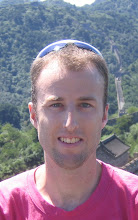Richard Florida is a popular writer on urban affairs, and is well known for his idea that greater creativity and tolerance fosters greater economic growth (see his “gay/hipster index”). His article, “The World is Spiky,” describes how economic production and scientific innovation is highly concentrated in a small number of cities. Four world maps show the importance of cities visually, in terms of population, light emissions (as a proxy for economic productivity), patents, and scientific citations. The last two are highly concentrated in just a handful of cities in North America, Western Europe, and East Asia. It’s a good counterargument to the current idea of a flat world where free trade together with fast and cheap computers and telecommunication allow anyone anywhere in the world to compete. Florida argues that cities provide many intangible benefits by concentrating creative and highly skilled people and providing an environment to commercialize new ideas and breakthroughs.
You could say the same of China, where average urban incomes are about 3.5 times as high as the average income in rural areas. Highly educated workers are concentrated in a small number of coastal cities and Beijing; Shenzhen is home to about half of the country’s PhDs working in private industry.
“The continuing dominance of the world’s most productive urban areas is astounding. When it comes to actual economic output, the ten largest U.S. metropolitan areas combined are behind only the United States as a whole and Japan. New York’s economy alone is about the size of Russia’s or Brazil’s, and Chicago’s is on a par with Sweden’s. Together New York, Los Angeles, Chicago, and Boston have a bigger economy than all of China. If U.S. metropolitan areas were countries, they’d make up forty-seven of the biggest 100 economies in the world.”
The attraction of cities for highly skilled and educated workers is further discussed in “Where the Brains Are”。
Finally, check out this interesting project that attempts to map the “geography of buzz” in New York City and Los Angeles.
Subscribe to:
Post Comments (Atom)



No comments:
Post a Comment